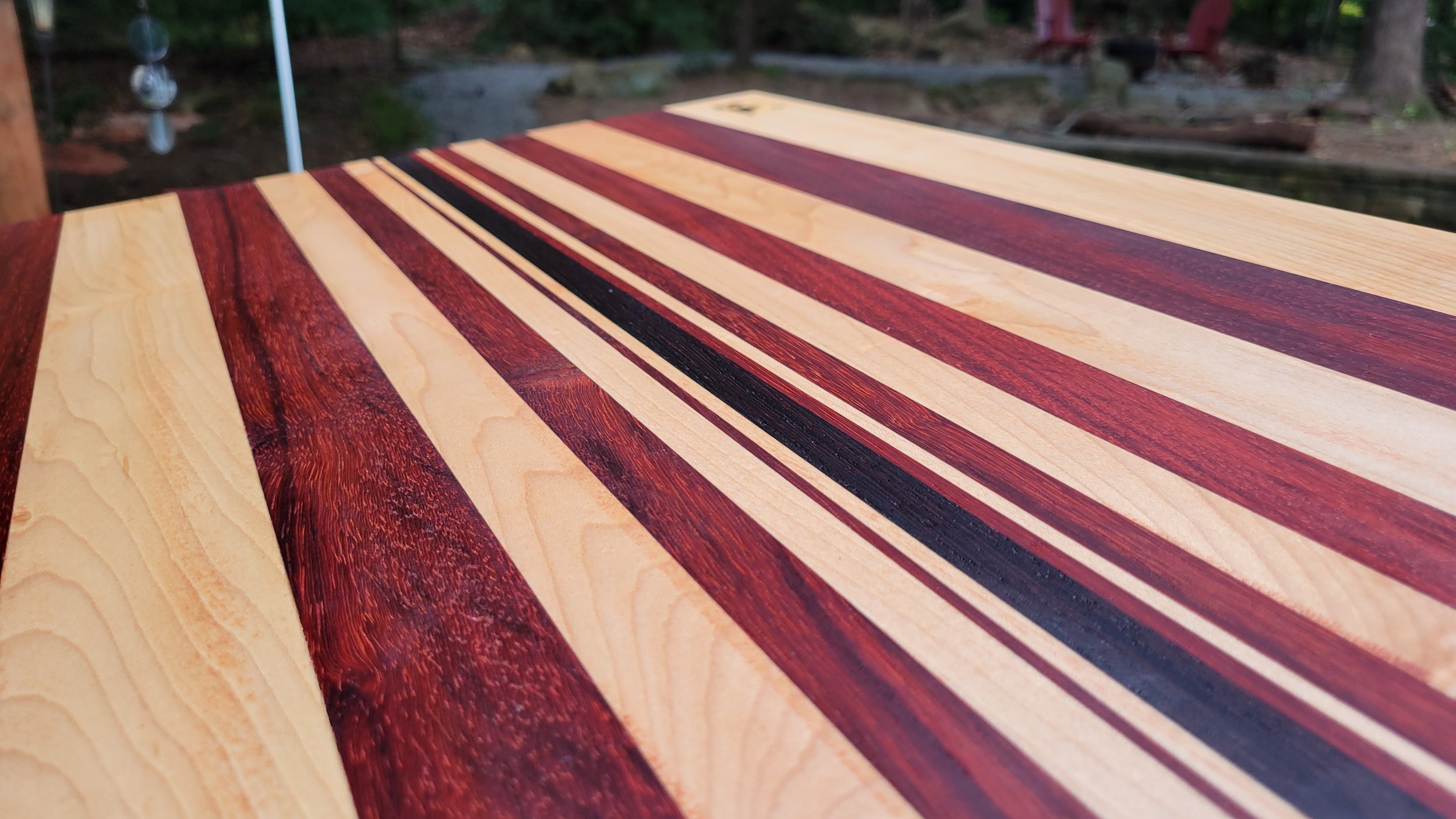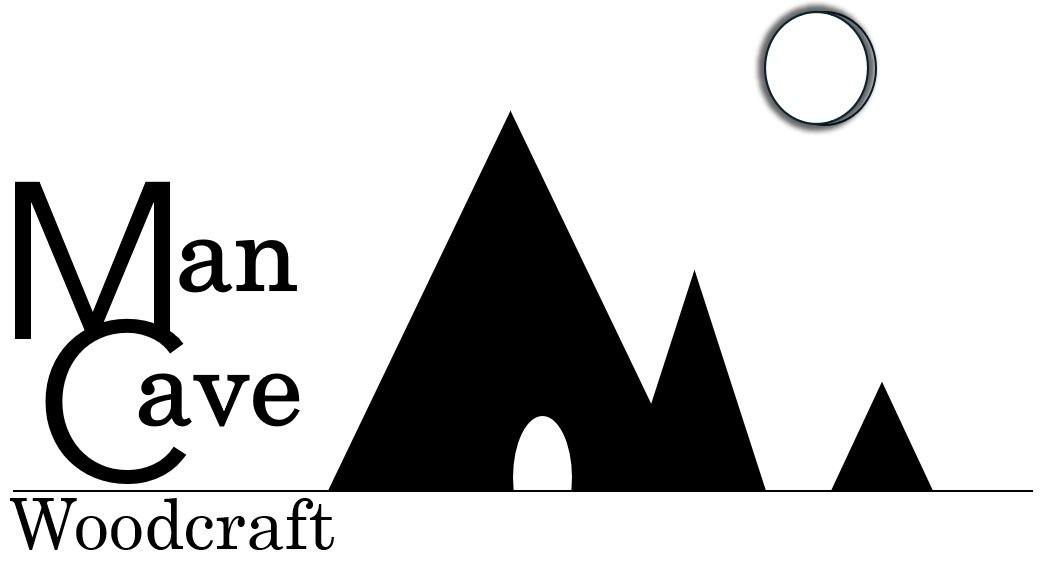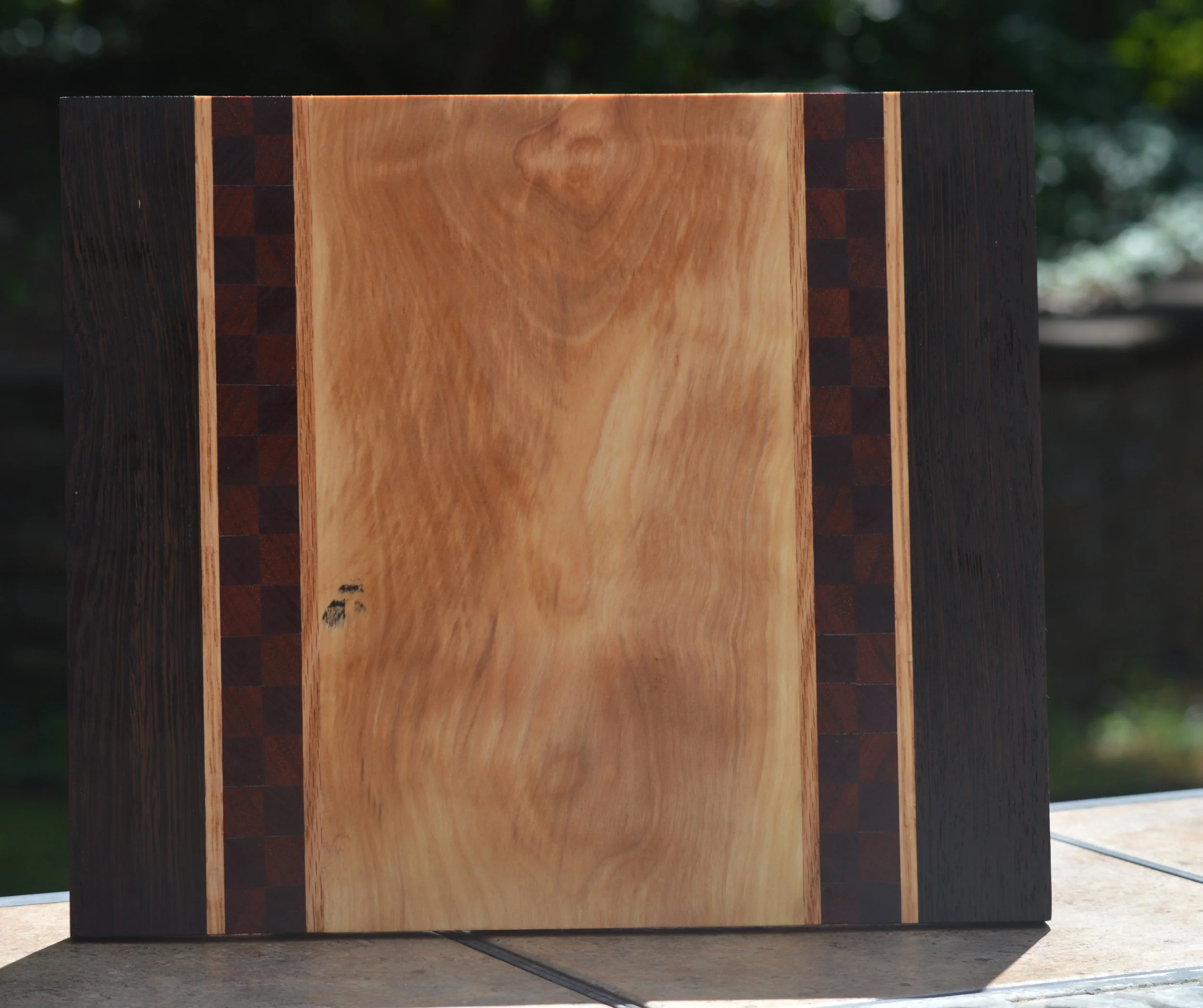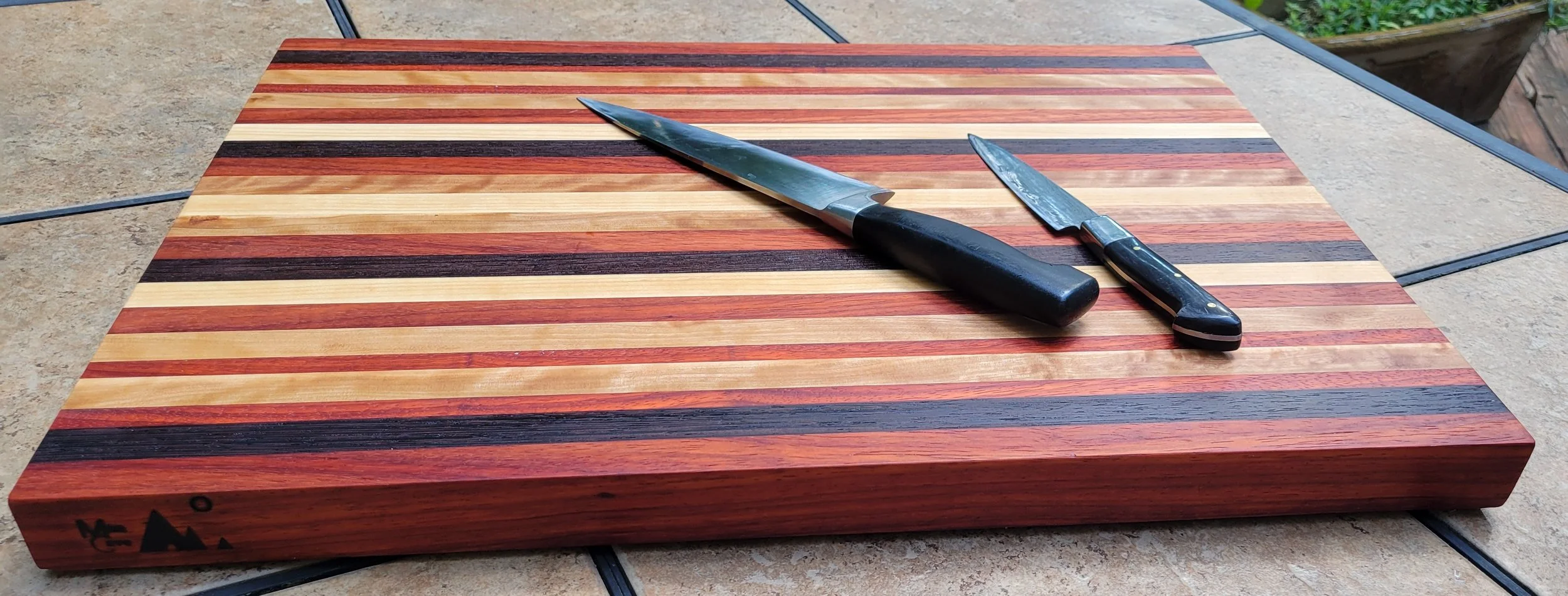
Decisions, Decisions, Decisions
Let me attempt to answer some of these questions to help with your decision.
Do you want end grain or edge grain?
The main difference between edge grain and end grain chopping boards lies in how the wood is arranged:
Edge grain: The wood grain runs parallel to the cutting surface. This creates a harder surface that is less forgiving on knives and can show cut marks more easily. Edge grain boards are typically more affordable.
End grain: The wood grain is vertical to the cutting surface. This creates a softer surface that is gentler on knives and resists showing cut marks. End grain boards are considered superior for these reasons but tend to be more expensive due to the labor-intensive construction process.
Here's a table summarizing the key differences:
What size and how thick?
There are two main criteria to consider when choosing the size and thickness of a chopping board:
1. Countertop space and your cooking habits:
Size:
Small boards (8" x 12" or similar): Ideal for chopping herbs, small vegetables, or cheese. Good for small kitchens or limited counter space.
Medium boards (12" x 18" or similar): Most popular size, versatile for chopping a variety of ingredients. Fits comfortably on most countertops.
Large boards (18" x 24" or bigger): Great for heavy-duty chopping, carving large roasts, or using as a serving platter. Requires ample counter space.
Thickness: Consider how you'll use the board:
Thin boards (1" to 1 ½"): Lightweight, good for everyday chopping and easy to store. Not ideal for heavy-duty tasks.
Thick boards (1 ½" to 3"): More stable for heavy chopping, carving, or butchering meat. Can be heavier and take up more storage space.
2. The type of food you typically prepare:
Thicker boards (1.5" and above) are recommended for:
Chopping or carving large, tough vegetables (like butternut squash)
Butchering meat
Using the board as a serving platter
A thinner board (around 1") might suffice for:
Everyday chopping of vegetables and fruits
Slicing bread or cheese
Additional factors:
Shape: Rectangular chopping boards are most common, but round or specific-shaped boards might be useful for certain tasks.
Material: Wood and bamboo boards are popular choices, but plastic and other materials are also available. Material can impact weight, durability, and maintenance needs.
Ultimately, the best size and thickness depend on your personal needs and cooking habits. Consider the counter space you have available and the types of tasks you'll use the chopping board for most often.
Important: Always prioritize food safety! Avoid woods like Purpleheart or Bubinga as they can be toxic. Look for options that are naturally anti-bacterial or can be treated with food-safe mineral oil.
Janka Hardness Chart:
This chart gives you a general idea of how hard different woods are, with higher numbers indicating a tougher wood. Remember, an ideal chopping board should balance hardness (to resist dents and cuts) with being gentle on your knives.
Below 1000: Softwood, not ideal for chopping boards (think pine or cedar)
1000 - 1500: Moderately hard, good balance for some (cherry, walnut)
1500 - 2000: Hard, very durable (maple, padauk)
2000 and above: Extremely hard, excellent durability but may damage knives (wenge, ipe)
What types of wood are you thinking about?
Picking a chopping board is like picking a superhero for your kitchen - it's gotta be tough on ingredients but gentle on your knives, and some exotic options can really take things up a notch! Here's the wood scoop, keeping in mind the Janka scale (remember, that's how we measure wood's toughness) and avoiding any toxic woods:
To Juice Groove or Not to Juice Groove
The juice groove on a chopping board can be a double-edged sword, offering both advantages and disadvantages. Here's a breakdown to help you decide if it's right for you:
Pros:
Keeps liquids contained: This is the main benefit. The groove catches juices from fruits, vegetables, or meats, preventing them from running off the board and making a mess on your counter. This can be especially helpful when dealing with particularly juicy ingredients like watermelon or tomatoes.
Improved hygiene: By containing the juices, a groove can help prevent cross-contamination between ingredients. This can be important when chopping raw meat or fish.
Easier cleaning: With juices contained, cleanup can be a breeze. Simply wipe down the board and empty the groove.
Cons:
Reduced usable surface area: A juice groove takes up space on the chopping board. For smaller boards, this can be a significant drawback, limiting your chopping area.
Potential cleaning challenges: While it might seem easier to clean with a groove, the groove itself can trap food particles and require more thorough cleaning.
Not always necessary: If you don't typically work with very juicy ingredients, a juice groove might be unnecessary. A simple tilt of the board can often direct juices towards a corner for easy cleanup.
Aesthetics: Some people find juice grooves to be visually unappealing, interrupting the clean lines of the chopping board.
Here are some additional factors to consider:
Your cooking style: If you frequently work with juicy ingredients, a groove might be a lifesaver. However, if you mostly chop vegetables or dry ingredients, it might be more hassle than it's worth.
The size of the board: A large board can better accommodate a juice groove without sacrificing too much chopping space. For a smaller board, it might be best to skip it.
Your personal preference: Ultimately, the decision comes down to what works best for you in the kitchen. Do you prioritize a clean counter or a larger chopping surface?
I hope this breakdown helps you decide on a chopping board that is the right fit for you!






